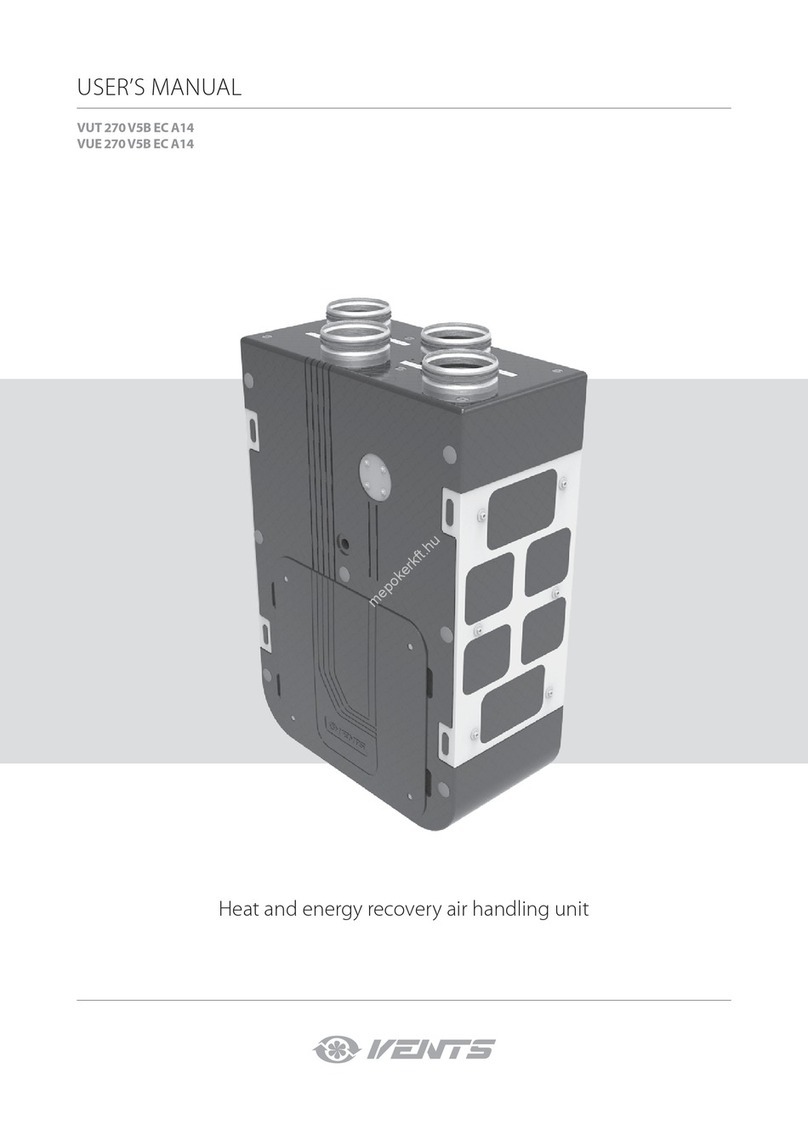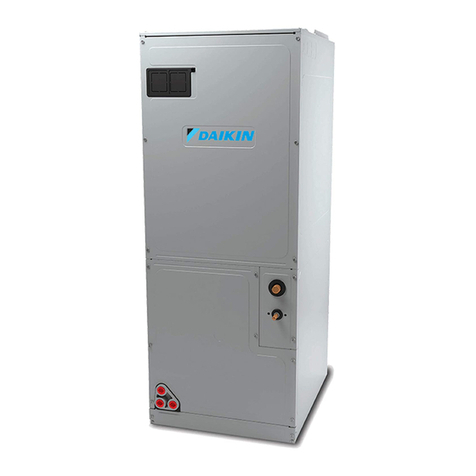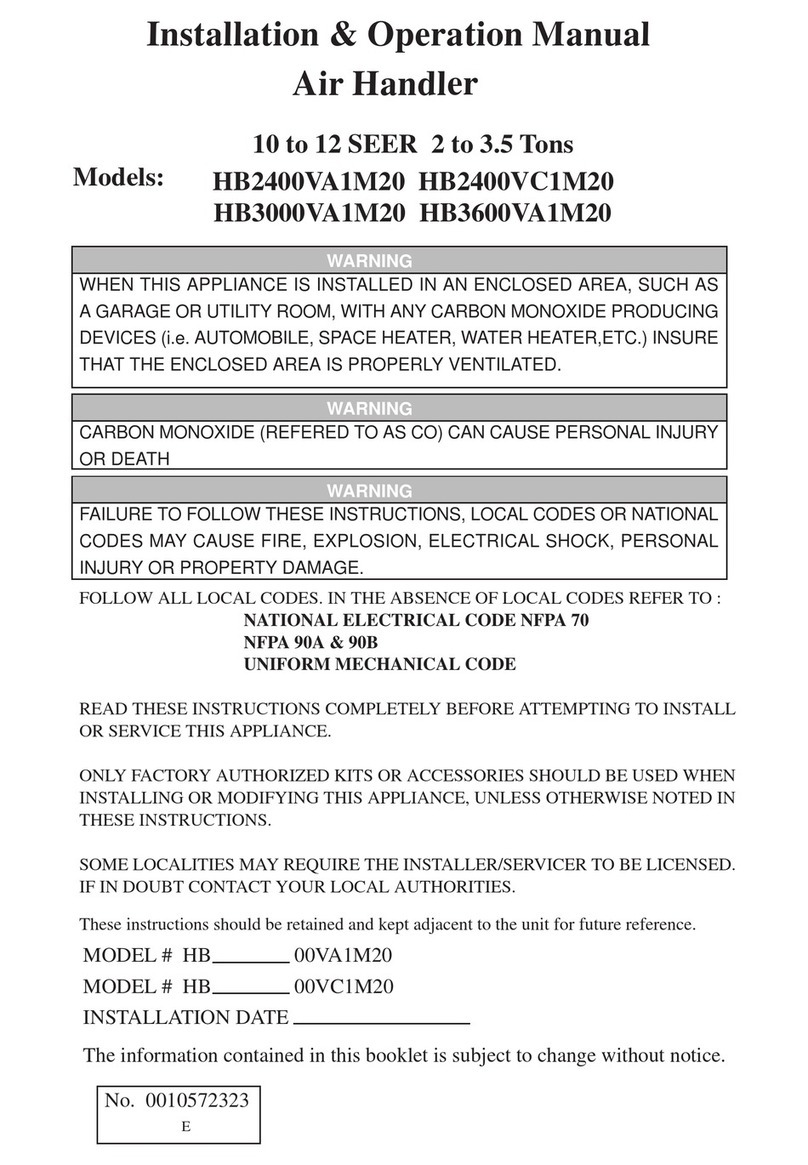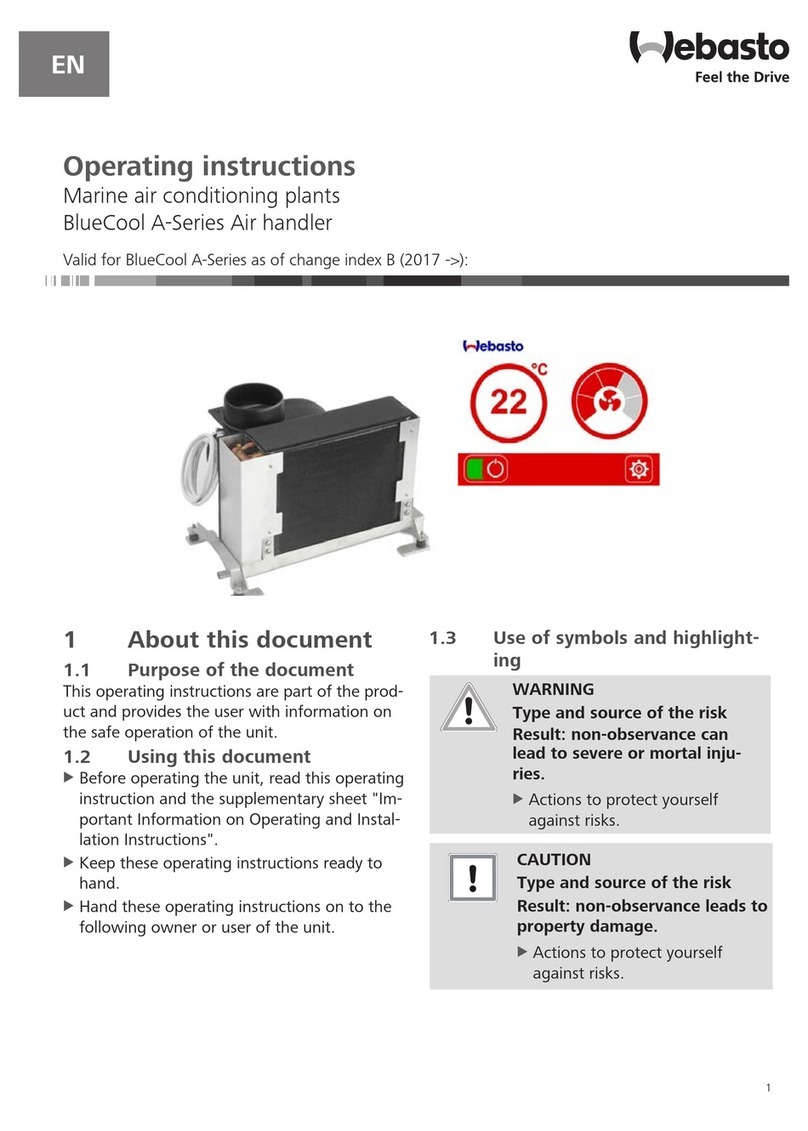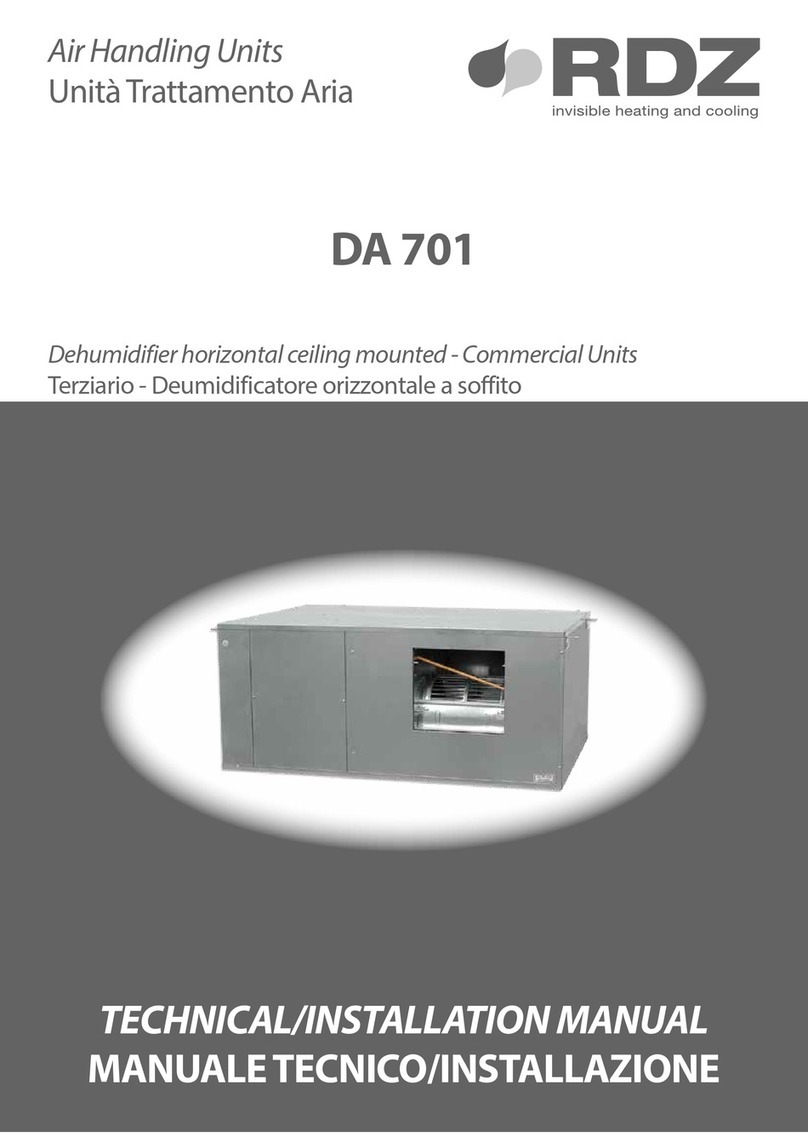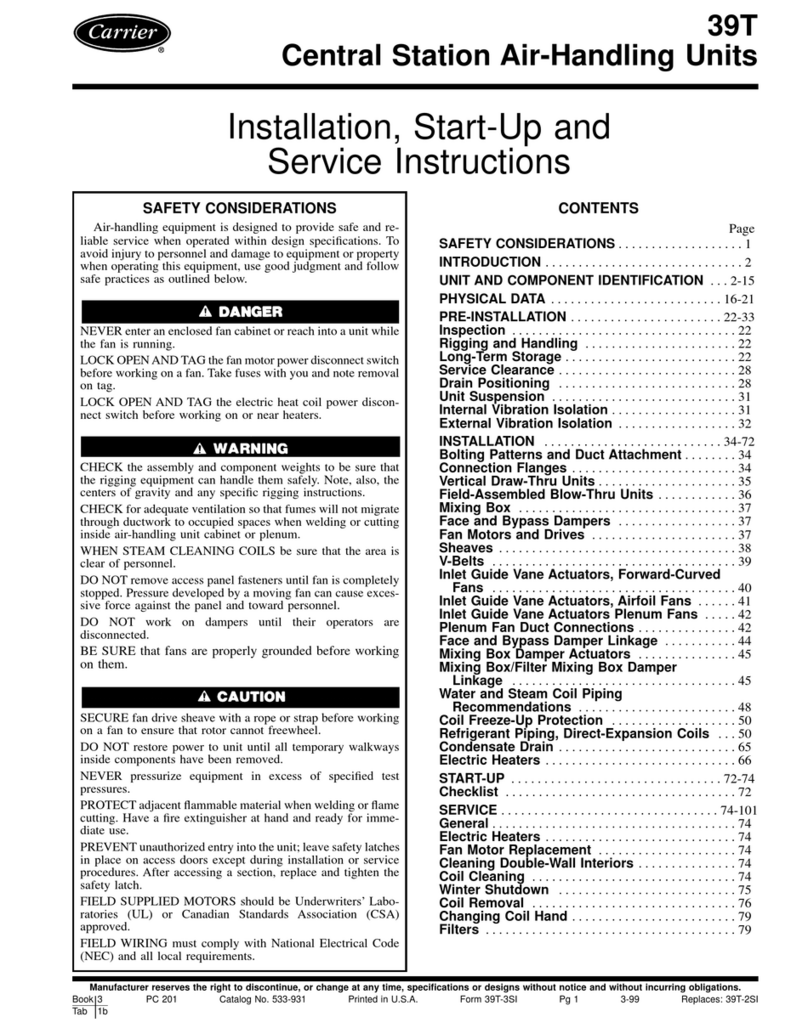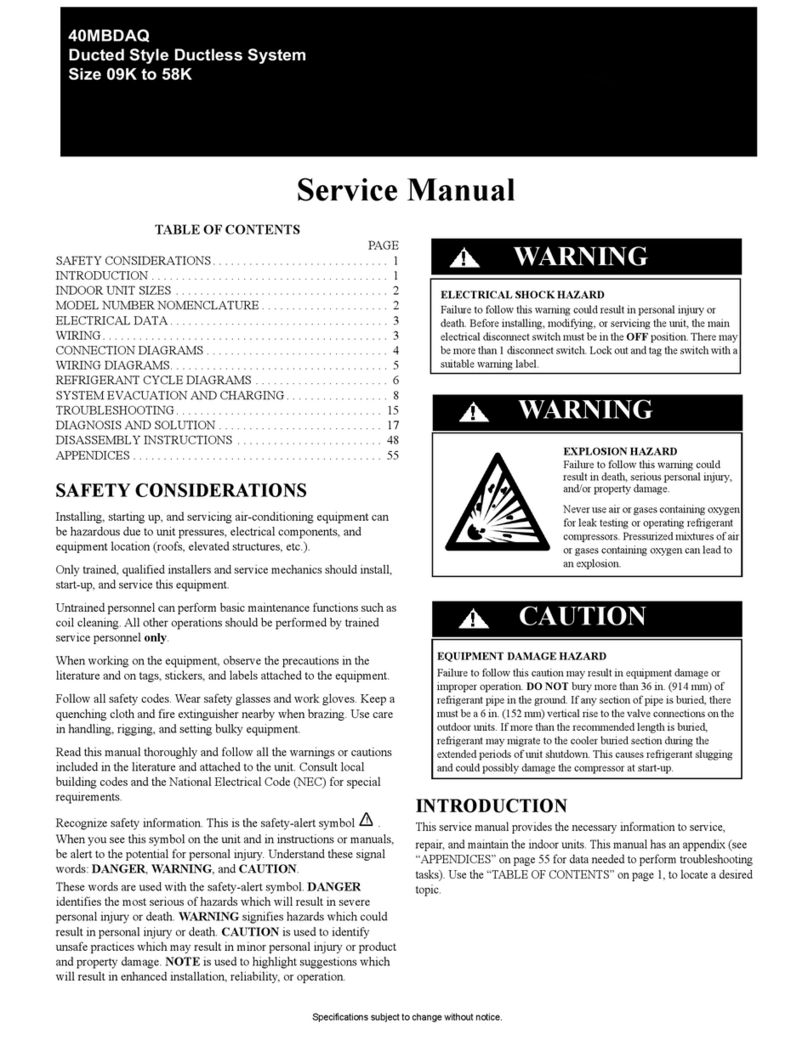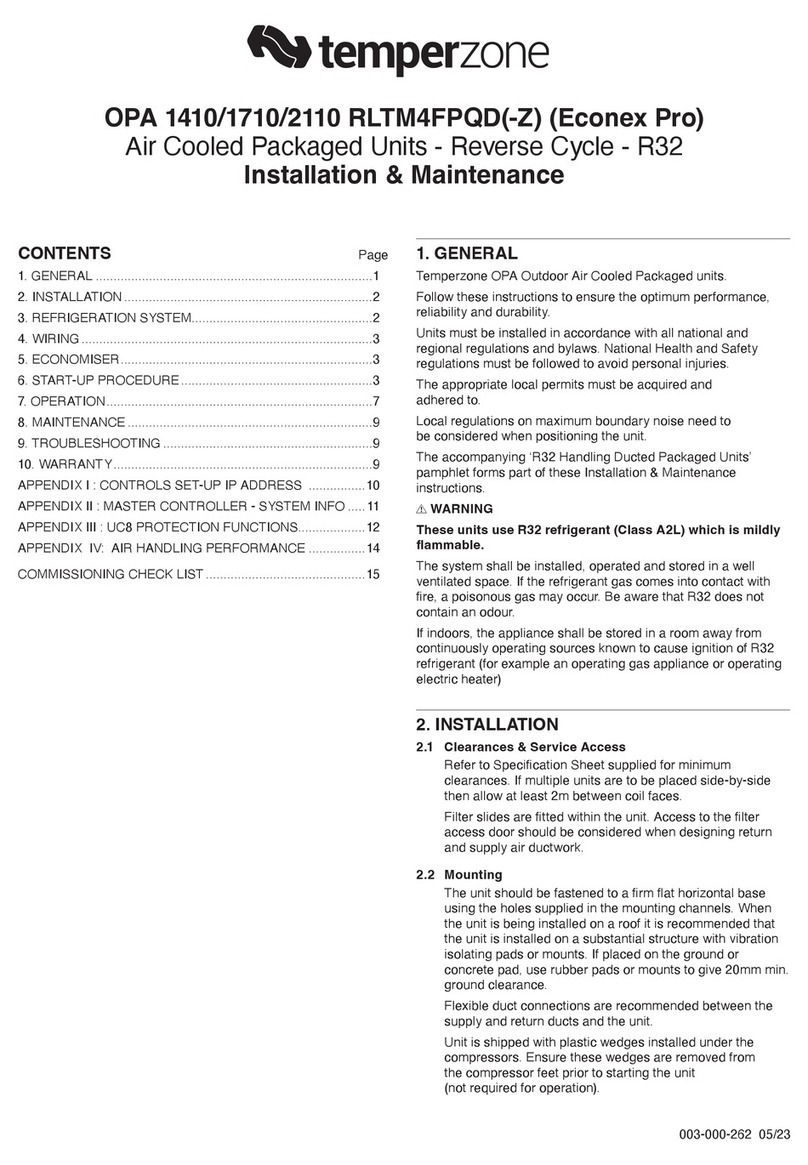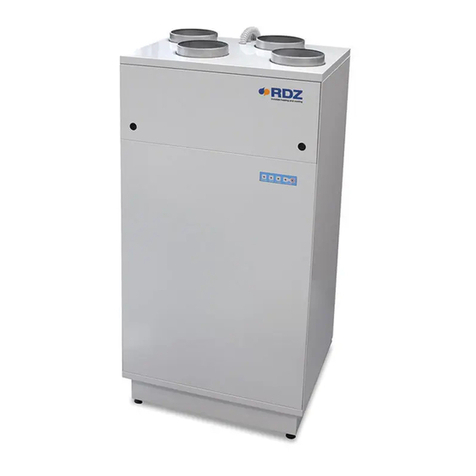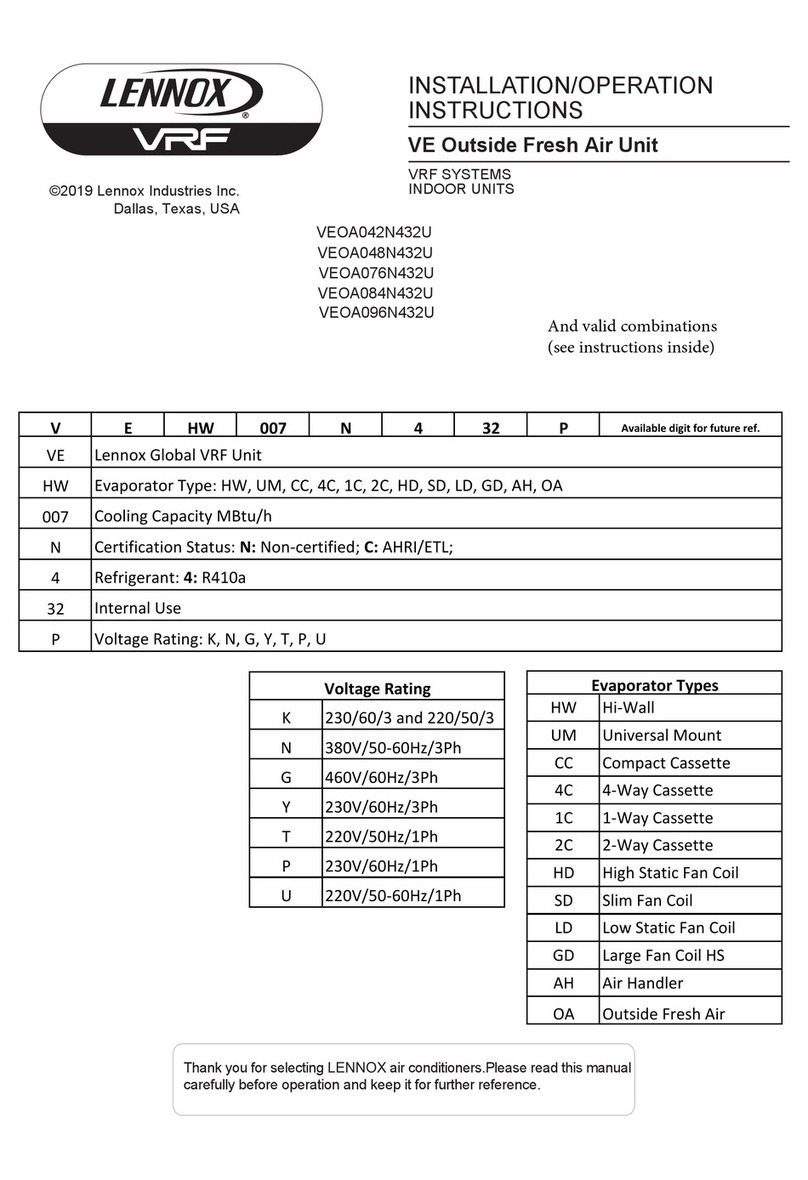
SAFETY
6
SAFETYCONSIDERATIONS
Improperinstallation,adjustment,alteration,service,
maintenance,orusecancauseexplosion,fire,electrical
shock,orotherconditionswhichmaycausedeath,personal
injury,orpropertydamage.
Consultaqualifiedinstaller,serviceagency,oryourdistribu‐
torformoreinformation,orassistance.Thequalifiedinstaller
oragencymustusefactory‐authorizedkitsoraccessories
whenmodifyingthisproduct.Refertotheindividualinstruc‐
tionspackagedwiththekitsoraccessorieswheninstalling.
Followallsafetycodes.Wearsafetyglasses,protectivecloth‐
ing,andworkgloves.
Usequenchingclothforbrazingoperationstoprotectsystem
components.
Havefireextinguisheravailable.Readtheseinstructionsthor‐
oughlyandfollowallwarningsorcautionsincludedinlitera‐
tureandattachedtotheunit.Consultlocalbuildingcodes
andNationalElectricalCode(NEC)forspecialrequirements.
Recognizesafetyinformation,symbolsandwords:
(DANGER) Identifies serious hazards which will
result in severe personal injury or death.
(CAUTION) Identifies unsafe practices which would
result in minor personal injury or product and
property damage.
(NOTE) is used to highlight suggestions which will
result in enhanced installation, reliability, or
operation.
INSTALLATIONRECOMMENDATIONSNOTES
1.) Positionunitawayfromwindows,patios,decks,etc.
wheretheunit’soperationalsoundmaydisturb
customer.
2.) Ensurethatvaporandliquidtubediametersare
appropriatetocapacityofunitandthatbothlinesare
wellinsulated.
3.) Runrefrigeranttubesasdirectlyaspossiblebyavoiding
unnecessaryturnsandbends,keepingtubestheshortest
lengthpossibletoreducerefrigerantchargeamountand
increaseefficiency.
4.) Whenpassingrefrigeranttubesthroughthewall,sealthe
openingwithRTVorotherpliablesilicon‐basedcaulkand
insulate.
5.) Installfilterdryerindoorsatairhandlerandinsulate.
6.) Insureunitisplacedawayfromroofendswhererain,ice,
snow,whereiciclesmayform,oranyotherdebrismay
fallontopof,anddamageunit.
7.) Besuretoaddanoiltraptothevaporlineforevery10ft
ofverticalrise.
8.) Avoiddirecttubingcontactwithwaterpipes,ductwork,
floorjoists,wallstuds,floors,walls,brick,orother
constructionmaterial.
9.) Donotsuspendrefrigeranttubingfromjoistsandstuds
witharigidwireorstrapwhichmaycomeindirect
contactwithtubing.
10.) Whennecessary,usehangerstrapswhichconformto
shapeoftubinginsulation.
11.) Isolatehangerstrapsfrominsulationbyusingmetal
sleevesbenttoconformtoshapeofinsulation.
12.) Insulateboththevaporlineandtheliquidlines
separatelysobothwillhavetheirowninsulation.The
Acadiautilizesthewasteheatonthe3/8”liquidlineat
lowertemperatures.Thatiswhywemustinsulate.
13.) Ifthelinesetisroutedontheexteriorofthehome,be
suretoaddadditionalinsulationtoboththeliquidand
vaporlinestominimizethermallossesfromthelineset.
(Note:Exteriorlinesetsmayhavehighthermallosses
thatcanreducesystemcapacityandefficiency.)
14.) Ensurethattubinginsulationispliable,sealedwithtape
orglueandcompletelysurroundstheVapor,andthe
Liquidtubesseparately.
15.) Maximumlinesetlengthis50ft;consultfactoryifother.
16.) Maximumverticalrise10ft;consultfactoryifother.
IMPORTANT:Maximumliquid‐linesizeis3/8–inO.D.forall
residentialapplications.The3/8‐inliquidlinemustbe
insulatedindependentlyfromthevaporlineinsulation.
(CAUTION) USE ONLY R410A RATED SERVICE
EQUIPMENT
Onlyinstallthefactory‐suppliedheatpump(bi‐flow)liquid
linefilterdrierontheliquidlineattheindoorunit.
Installationofthefilterdryerinsideistohelppreventheat
lossduringheatingoperation.Thefilterdriermustbe
insulated.Obtainreplacementbi‐directionalR410Arated
filterdriersfromyourlocalsupplydistributor.
